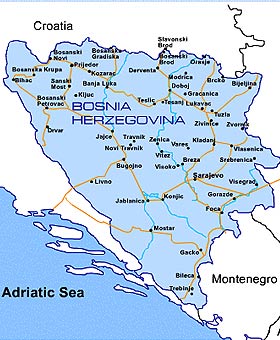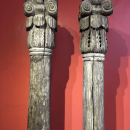Cultural tourism Bosnia and Herzegovina
Cultural tourism and cultural experiences attract travelers searching for authentic cultural attractions, heritage sites, museums, and unique cultural tours. With the option of online booking, visitors can easily plan journeys full of art, history, and local traditions. Discover fascinating stories, explore crafts, and connect with diverse cultures through guided tours, exhibitions, and workshops. Whether you seek inspiration, education, or unforgettable memories, cultural tourism offers enriching adventures for every traveler. Start your cultural travel today and unlock a world of timeless beauty and creativity.
Cultural tourism Bosnia and Herzegovina FAQ
On the south east part of Europe, on the west part of the Balkan peninsula is located the heart-shaped country- Bosnia and Herzegovina.
Bosnia and Herzegovina borders with Croatia, Serbia and Montenegro. The country is divided in two entities: the Federation of Bosnia and Herzegovina and the Republic of Serbia; and in one district- Brcko. The same name Bosnia and Herzegovina leads to a conclusion that is about two different names that we are talking about. The names indicate historic and age different development regions. The name Bosnia was first mentioned in the X. century and it was used for middle and north area of the river Bosna. Herzegovina instead was mentioned for the first time in the XV: century and its origin comes from the word "herceg" which was a sort of title for the sovereign of the area, while in the former name was Hum and Zahumlje.
The rich history of the territory, that the occupies nowadays, gives us the confirmation that during the centuries the state changed its territory shape and was...
Tourist offers Bosnia and Herzegovina
Gastronomy Bosnia and Herzegovina
Health Tourism Bosnia and Herzegovina
Active Tourism Bosnia and Herzegovina
Culture Tourism Bosnia and Herzegovina
Nightlife Bosnia and Herzegovina
Transfers Bosnia and Herzegovina
Events and entertainment Bosnia and Herzegovina
Excursions Bosnia and Herzegovina
Hotels in Bosnia and Herzegovina
Private accommodations in Bosnia and Herzegovina
Tourist resorts in Bosnia and Herzegovina
Holiday houses in Bosnia and Herzegovina
Villas with Pool in Bosnia and Herzegovina
Camps, mobile homes in Bosnia and Herzegovina
Boat rental in Bosnia and Herzegovina
Farm holidays in Bosnia and Herzegovina
Hostel in Bosnia and Herzegovina
Cultural tourism Bosnia and Herzegovina Offer

































 Professional serivce
Professional serivce Quality tourist service
Quality tourist service 14 years in business
14 years in business A large number of satisfied guests
A large number of satisfied guests